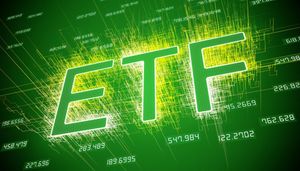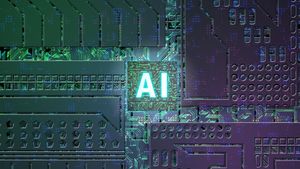
Apple's (NASDAQ: AAPL) highly anticipated iPhone 17 line is poised to redefine smartphone expectations, showcasing an array of groundbreaking hardware innovations, striking fresh designs, and significantly upgraded camera systems. From the rumored ultra-thin iPhone Air to the powerful A19 Pro chips, these physical advancements are generating considerable excitement. However, beneath the polished surface of these tangible improvements lies the quiet, yet profound, ambition of Apple Intelligence – a personal AI system that, despite its nascent stage and initial challenges, is increasingly viewed as the strategic cornerstone for Apple's long-term vision. While the immediate allure of a thinner phone and sharper photos captures headlines, the true narrative unfolding is how these sophisticated hardware marvels are meticulously engineered to serve as the indispensable foundation for an intelligent future, with Apple Intelligence slowly but surely emerging as the ultimate differentiator.
Unpacking the iPhone 17's Technological Marvels and the Dawn of Apple Intelligence
The iPhone 17 series is not merely an incremental update; it represents a significant leap in Apple's engineering prowess, with a meticulous focus on enhancing every facet of the user experience. The internal architecture is being overhauled to support the next generation of computing, with the standard iPhone 17 featuring the new A19 chip and the iPhone Air and iPhone 17 Pro/Pro Max models boasting the more advanced A19 Pro chip. Both chipsets are rumored to integrate specialized Neural Accelerators, crucial for boosting on-device generative AI performance. Accompanying these powerful processors, the base iPhone 17 is expected to offer 8GB of RAM, the minimum for Apple Intelligence, while the iPhone Air and Pro models could see up to 12GB of RAM, further solidifying their capacity for complex AI tasks and seamless multitasking. To manage the increased thermal demands of these potent components, Apple is reportedly integrating advanced cooling systems, including vapor chamber (VC) heat sinks across the lineup, with the Pro Max potentially featuring an even more sophisticated graphite cooling sheet system. Furthermore, the inclusion of an Apple-designed N1 networking chip and Wi-Fi 7 across all models promises enhanced connectivity, while storage is expected to start at 256GB for the base iPhone 17, indicating a push towards higher default capacities.
Perhaps the most visually striking innovation lies in the design, with an unprecedented emphasis on thinness. The rumored iPhone Air is set to be the thinnest iPhone ever, with prototypes reportedly measuring an astonishing 5-6mm. This sleek profile, coupled with a large 6.5-inch or 6.6-inch display and a hybrid titanium and aluminum frame, signals a bold aesthetic direction. While this extreme thinness might necessitate compromises, such as a single speaker or the absence of a physical SIM tray, advanced silicon anode battery technology is expected to optimize battery life. The standard iPhone 17 is also slated for a substantial redesign, aligning its aesthetics more closely with the Pro models, featuring a slightly larger 6.3-inch display with noticeably slimmer bezels and enhanced scratch resistance from Ceramic Shield 2. The iPhone 17 Pro and Pro Max are also expected to see significant overhauls, including a potential shift to an aluminum frame for reduced weight and a redesigned rear camera module that could integrate a horizontal "camera plateau" spanning the device's width.
Camera technology, a perennial highlight for Apple, receives significant upgrades across the board. The front-facing camera on all iPhone 17 models is anticipated to see a substantial boost, potentially to an 18-megapixel "Center Stage" camera with a unique square sensor for wider field-of-view selfies and enhanced video calls powered by AI. The standard iPhone 17 will maintain a dual-lens rear camera system, but with both the Wide and Ultra Wide lenses receiving 48-megapixel sensors – a considerable improvement for the latter. The Pro models, however, are where photographic innovation truly shines, with rumors suggesting a triple-lens rear camera system where all three cameras (Main, Ultra Wide, and Telephoto) are 48-megapixels. The telephoto lens, in particular, is expected to jump from 5x to an impressive 8x optical zoom, accompanied by enhanced professional video capabilities like ProRes RAW and 4K Dolby Vision at 120 frames per second.
Amidst these hardware spectacles, Apple Intelligence has made its debut as a personal intelligence system deeply integrated across Apple's ecosystem. Designed to deliver tailored experiences by merging generative models with user context, it relies heavily on the powerful A19/A19 Pro chips and ample RAM. However, its rollout has been characterized by a measured pace, with some promised features facing delays. Early reviews have sometimes cited "underwhelming performance" compared to established competitors like ChatGPT, and concerns about potential "hallucinations" have been raised. Despite these initial critiques and a somewhat conservative marketing approach that has prioritized tangible hardware upgrades, a surprising consumer survey indicated strong interest, with 80% of respondents willing to pay for Apple Intelligence and many considering it an "extremely important" feature for their next iPhone. This dichotomy highlights Apple's long-game strategy: while the hardware provides immediate gratification, Apple Intelligence is the intricate, evolving brain that will ultimately define the iPhone's future capabilities.
Market Ripple Effects: Who Wins and Who Loses?
The launch of the iPhone 17 line, spearheaded by its formidable hardware and the foundational integration of Apple Intelligence, is set to create significant ripples across the technology and financial markets. The most obvious winner is, of course, Apple (NASDAQ: AAPL) itself. By pushing the boundaries of design with the ultra-thin iPhone Air and delivering substantial performance and camera upgrades, Apple aims to maintain its premium market position and drive upgrade cycles. The strategic emphasis on integrating Apple Intelligence, even if its full capabilities are yet to be realized, positions the company as a serious contender in the burgeoning AI race, potentially creating a powerful ecosystem lock-in effect for users who value privacy and seamless integration. Increased sales, coupled with higher average selling prices (ASPs) for the Pro and Air models, could lead to robust revenue growth and a strengthened balance sheet.
However, Apple's aggressive innovations also pose significant challenges for its competitors. Smartphone rivals like Samsung (KRX: 005930), Google (NASDAQ: GOOGL) with its Pixel line, and other Android manufacturers will face renewed pressure to innovate, particularly in design aesthetics and camera technology. The rumored thinness of the iPhone Air could trigger a new "thinness race" in the premium segment, forcing competitors to re-evaluate their design philosophies. Furthermore, as Apple Intelligence matures, it could establish a new benchmark for on-device AI, compelling competitors to accelerate their own AI development and integration, potentially increasing R&D costs. Companies heavily reliant on hardware differentiation alone might find themselves struggling to keep pace with Apple's combined hardware and nascent AI strategy.
On the supplier front, there will be both winners and those facing increased scrutiny. Manufacturers of advanced display technologies, sophisticated camera sensors, and efficient thermal management solutions are likely to see increased demand from Apple. Companies providing specialized materials for thinner chassis (like titanium and advanced aluminum alloys) or next-generation battery technologies (silicon anode) could also benefit significantly. Conversely, suppliers that fail to meet Apple's stringent demands for innovation, quality, or cost-efficiency might see their contracts reduced or terminated. The shift towards Apple's custom N1 networking chip, for instance, could impact third-party modem suppliers in the long run. The broader semiconductor industry will also feel the effects, as the A19 and A19 Pro chips push manufacturing capabilities to new limits, potentially benefiting leading-edge foundry partners.
Broader Significance: AI's Ascent and the Evolving Smartphone Landscape
The iPhone 17's debut, particularly its deep entanglement with Apple Intelligence, signifies a critical juncture in the broader technology landscape. This event is not merely about a new phone; it's a testament to the industry-wide trend of AI integration moving from the cloud to the edge – directly onto personal devices. Apple's approach, emphasizing on-device processing for privacy and responsiveness, sets a high bar for how personal AI should function. This move validates the notion that future computing experiences will be inherently intelligent, proactive, and deeply personalized, moving beyond simple voice assistants to truly understand and anticipate user needs. It accelerates the race among tech giants to deliver robust, secure, and genuinely useful AI capabilities directly into consumers' hands.
The potential ripple effects on competitors and partners are substantial. Other smartphone manufacturers, already grappling with market saturation and slowing upgrade cycles, will be forced to double down on their AI strategies. Companies like Google, which has been at the forefront of AI integration with its Pixel devices, will face intensified competition, pushing them to innovate further in areas like contextual understanding and generative AI applications. The tight hardware-software integration that Apple champions, especially with Apple Intelligence, could also influence operating system developers and app ecosystems. Developers will increasingly need to leverage on-device AI capabilities to create compelling applications, potentially leading to a new wave of innovation in app functionalities.
Regulatory and policy implications are also likely to emerge. As AI becomes more pervasive on personal devices, concerns around data privacy, algorithmic bias, and security will intensify. Regulators globally may scrutinize how companies like Apple handle personal data processed by on-device AI, potentially leading to new guidelines or compliance requirements. The competitive landscape could also draw antitrust attention if Apple's integrated ecosystem is perceived as unfairly disadvantaging third-party AI developers or hardware manufacturers. Historically, Apple has navigated similar challenges with its App Store policies and hardware design choices, but the advent of deeply integrated AI adds a new layer of complexity. Comparisons can be drawn to previous paradigm shifts, such as the introduction of the original iPhone which revolutionized mobile computing, or the launch of Siri which popularized voice assistants. Each time, Apple's moves have prompted industry-wide reorientation, and Apple Intelligence appears poised to do the same for personal AI.
The Road Ahead: Navigating the AI Frontier
Looking ahead, the short-term and long-term possibilities stemming from the iPhone 17 and Apple Intelligence are vast and varied. In the short term, Apple will likely focus on refining Apple Intelligence, rolling out delayed features, and enhancing its performance to meet high user expectations. This period will be crucial for establishing its credibility against more mature AI offerings. Market adoption of the iPhone 17, particularly the innovative iPhone Air, will be closely watched as a barometer of consumer appetite for cutting-edge design and premium features. Apple's marketing will need to deftly balance the immediate appeal of hardware with the long-term promise of AI.
Strategically, Apple may need to pivot or adapt based on user feedback and competitive pressures. If Apple Intelligence struggles to gain traction, the company might need to accelerate its development, potentially through more aggressive acquisitions or partnerships in the AI space. Conversely, if it proves highly successful, Apple could further integrate AI into its entire product ecosystem, from Macs to Apple Watch, creating an even more cohesive and intelligent user experience. Market opportunities will emerge for developers creating AI-powered applications that leverage Apple Intelligence's on-device capabilities, potentially fostering a new segment of personalized, privacy-focused apps. Challenges include managing the significant computational resources required for advanced AI, mitigating potential "hallucinations" or inaccuracies, and navigating the ethical considerations of pervasive personal AI.
Potential scenarios and outcomes range from Apple solidifying its position as the leader in personal AI, setting a new industry standard for intelligent devices, to facing stiff competition from rivals who accelerate their own AI roadmaps. A positive outcome would see Apple Intelligence becoming a key driver for iPhone upgrades and ecosystem stickiness, opening new revenue streams through AI-enhanced services. A less favorable scenario might involve slower-than-anticipated adoption or persistent performance issues, leading to a perception that Apple is lagging in the AI race. The success of the iPhone 17 line, therefore, hinges not just on its impressive hardware, but critically on the successful maturation and widespread acceptance of Apple Intelligence as a truly transformative technology.
Final Thoughts: A New Era of Intelligent Hardware
The iPhone 17 line represents a pivotal moment for Apple, showcasing an impressive array of hardware innovations that push the boundaries of design, performance, and photography. The ultra-thin iPhone Air, the potent A19 Pro chips, and the significantly upgraded camera systems are immediate draws, embodying Apple's relentless pursuit of engineering excellence. However, the underlying narrative is the strategic integration of Apple Intelligence, which, despite its nascent stage and initial public perception challenges, is meticulously woven into the fabric of these hardware advancements. This personal AI system is not just another feature; it's the foundational layer upon which Apple is building its future, aiming to deliver a truly intelligent, personalized, and private user experience.
Moving forward, the market will be closely assessing how Apple Intelligence evolves and how effectively it transforms the user experience. Its success or struggle will not only impact Apple's trajectory but will also shape the broader smartphone and AI industries. Competitors will be forced to innovate more aggressively in AI, while developers will find new opportunities to create intelligent applications. For investors, the coming months will be crucial. They should watch for the continued rollout and performance improvements of Apple Intelligence features, consumer adoption rates of the iPhone 17 line (especially the iPhone Air), and Apple's strategic communications regarding its AI roadmap. The interplay between Apple's tangible hardware marvels and the evolving intelligence beneath the surface will define the company's standing in this new era of intelligent computing.
This content is intended for informational purposes only and is not financial advice


















